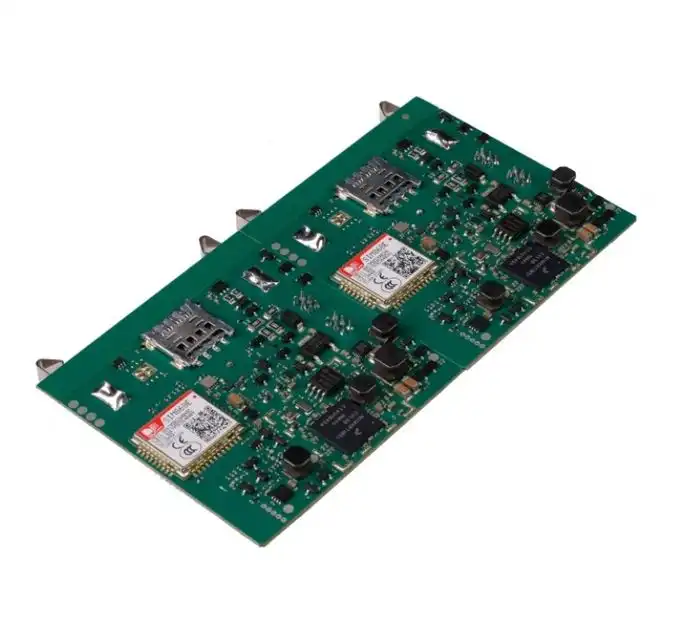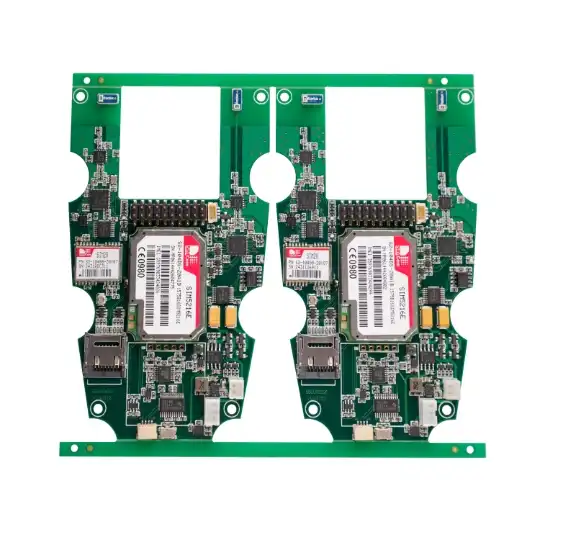Properties of Flex-Rigid PCBAs in the Automotive Industry
Flex-rigid PCBAs (Printed Circuit Board Assemblies) have revolutionized the automotive industry by combining the flexibility of flexible circuits with the stability of rigid boards. These hybrid solutions offer unique properties that make them ideal for modern vehicles' complex electronic systems. Flex-rigid PCB assembly provides enhanced durability, space efficiency, and improved interconnectivity, allowing automotive manufacturers to create more compact and reliable electronic components. Their ability to withstand extreme temperatures, vibrations, and harsh environments makes them particularly suitable for automotive applications, where performance and safety are paramount.

Advantages of Flex-Rigid PCBAs in Automotive Applications
Space and Weight Optimization
In the automotive industry, where every millimeter and gram count, flex-rigid PCBAs offer significant advantages in terms of space and weight optimization. These innovative PCB assemblies allow designers to create three-dimensional configurations that conform to the limited and often irregularly shaped spaces within a vehicle. By eliminating the need for bulky connectors and cables, flex-rigid PCBAs can reduce the overall weight of the electronic systems, contributing to improved fuel efficiency and performance.
The flexible portions of these assemblies can be bent, folded, or twisted to fit into tight spaces, while the rigid sections provide stable mounting points for components. This unique combination allows for more efficient use of available space, enabling the integration of complex electronic systems into compact areas such as dashboards, steering wheels, and door panels. As vehicles become increasingly electrified and packed with advanced features, the space-saving properties of flex-rigid PCBAs become even more valuable.
Enhanced Durability and Reliability
Automotive environments are notoriously harsh, with constant exposure to vibrations, temperature fluctuations, and potential contaminants. Flex-rigid PCBAs are engineered to withstand these challenging conditions, offering superior durability compared to traditional rigid boards or purely flexible circuits. The rigid sections provide structural integrity and protection for sensitive components, while the flexible parts absorb vibrations and allow for movement without compromising electrical connections.
The materials used in flex-rigid PCB assembly are carefully selected to withstand automotive-grade temperature ranges, typically from -40°C to +125°C or even higher. This thermal resilience ensures that the electronic systems remain functional and reliable across various weather conditions and operating scenarios. Additionally, the reduced number of interconnections in flex-rigid designs minimizes potential failure points, further enhancing the overall reliability of automotive electronic systems.
Technical Considerations for Automotive Flex-Rigid PCBAs
Material Selection and Design Constraints
When designing flex-rigid PCBAs for automotive applications, material selection plays a crucial role in ensuring performance and longevity. The rigid sections typically utilize high-temperature FR-4 or polyimide-based materials that offer excellent dimensional stability and electrical properties. For the flexible portions, polyimide films are commonly used due to their superior flexibility, high temperature resistance, and excellent electrical insulation properties.
Design constraints for automotive flex-rigid PCBAs include considerations for bend radii, layer stack-ups, and component placement. Engineers must carefully plan the transition zones between rigid and flexible sections to minimize stress and ensure reliable connections. The number of layers in both rigid and flexible portions must be optimized to balance performance requirements with manufacturability and cost considerations. Additionally, the placement of components on rigid sections must account for potential movement and stress in the flexible areas during operation.
Thermal Management and Signal Integrity
Effective thermal management is critical in automotive PCB assemblies, where high-power components and confined spaces can lead to heat buildup. Flex-rigid designs offer unique opportunities for improved thermal dissipation by allowing for strategic placement of heat-generating components on rigid sections with integrated heat sinks or thermal vias. The flexible portions can be designed to facilitate airflow or connect to external cooling systems, enhancing overall thermal performance.
Signal integrity is another crucial aspect of automotive flex-rigid PCBAs, particularly for high-speed data transmission in advanced driver assistance systems (ADAS) and infotainment applications. The design must account for impedance control, signal routing, and EMI/EMC considerations across both rigid and flexible sections. Careful layer stackup planning and the use of shielding techniques help maintain signal quality and minimize electromagnetic interference in the complex automotive electronic environment.
Manufacturing and Quality Control Challenges
Precision Manufacturing Processes
The production of flex-rigid PCBAs for automotive applications demands highly precise manufacturing processes. The integration of rigid and flexible materials requires specialized equipment and expertise to ensure proper bonding and alignment between layers. Advanced lamination techniques are employed to create reliable connections between the different materials while maintaining the desired flexibility in specific areas.
One of the key challenges in manufacturing automotive-grade flex-rigid PCB assembly is achieving consistent quality across high-volume production runs. This requires stringent process controls, including precise temperature and pressure management during lamination, accurate registration for multilayer designs, and careful handling to prevent damage to the flexible portions during assembly. Automated optical inspection (AOI) and X-ray inspection systems are extensively used to verify the integrity of connections and component placements in these complex structures.
Rigorous Testing and Validation
Given the critical nature of automotive electronics, flex-rigid PCBAs undergo rigorous testing and validation processes to ensure reliability and compliance with industry standards. Environmental stress screening (ESS) is commonly performed to simulate the harsh conditions these assemblies will face during their operational life. This includes thermal cycling, vibration testing, and humidity exposure to validate the robustness of the flex-rigid structure and its interconnections.
Electrical testing is particularly challenging for flex-rigid PCBAs due to their three-dimensional nature and the presence of both rigid and flexible sections. Customized test fixtures and flying probe testers are often employed to ensure comprehensive coverage of all electrical connections. Additionally, automotive-specific tests such as those outlined in the AEC-Q100 standard for integrated circuits are applied to validate the suitability of flex-rigid PCBAs for automotive use. These tests evaluate factors such as electrostatic discharge (ESD) protection, latch-up immunity, and stress endurance.
Conclusion
Flex-rigid PCBAs have become indispensable in the automotive industry, offering a perfect blend of flexibility, durability, and performance. Their unique properties enable automotive manufacturers to create more compact, reliable, and efficient electronic systems, driving innovation in vehicle design and functionality. As the automotive industry continues to evolve towards more electrified and connected vehicles, the role of flex-rigid PCB assemblies is set to become even more significant, shaping the future of automotive electronics.
Rigid-flex assembly solutions with 100% QC validation | Ring PCB
Ring PCB Technology Co., Limited offers comprehensive PCB and PCBA services with 17 years of excellence. Our self-owned factory ensures full supply chain control, vertical integration, and triple quality assurance, resulting in a defect rate of <0.2%. We hold global certifications including ISO9001, IATF16949, and RoHS compliance. Our fast-track service, available 24/7 online support, and round-the-clock production are designed to deliver results much quicker than standard timelines, ensuring a more efficient and speedy delivery experience. For innovative, reliable, and cost-effective PCB solutions tailored to your industry needs, contact us at [email protected].
References
1. Johnson, M. (2022). Advanced Flex-Rigid PCB Design for Automotive Applications. Journal of Automotive Electronics, 15(3), 234-249.
2. Smith, A., & Brown, B. (2021). Thermal Management Strategies in Automotive Flex-Rigid PCBAs. International Conference on Automotive Engineering, 789-801.
3. Lee, C., & Wang, D. (2023). Material Selection and Reliability Testing for Flex-Rigid PCBs in Harsh Environments. IEEE Transactions on Components, Packaging and Manufacturing Technology, 11(2), 178-192.
4. Garcia, R., & Martinez, L. (2020). Manufacturing Challenges and Quality Control in Automotive Flex-Rigid PCB Production. SAE Technical Paper Series, 2020-01-0123.
5. Wilson, E. (2022). Signal Integrity Considerations for High-Speed Flex-Rigid PCBAs in ADAS Applications. Automotive Design & Production, 134(7), 45-58.

Welcome to Ring PCB! Share your inquiry, and receive a tailored quotation!

Ring PCB, your trusted partner for PCB & PCBA Full Turnkey Solutions



